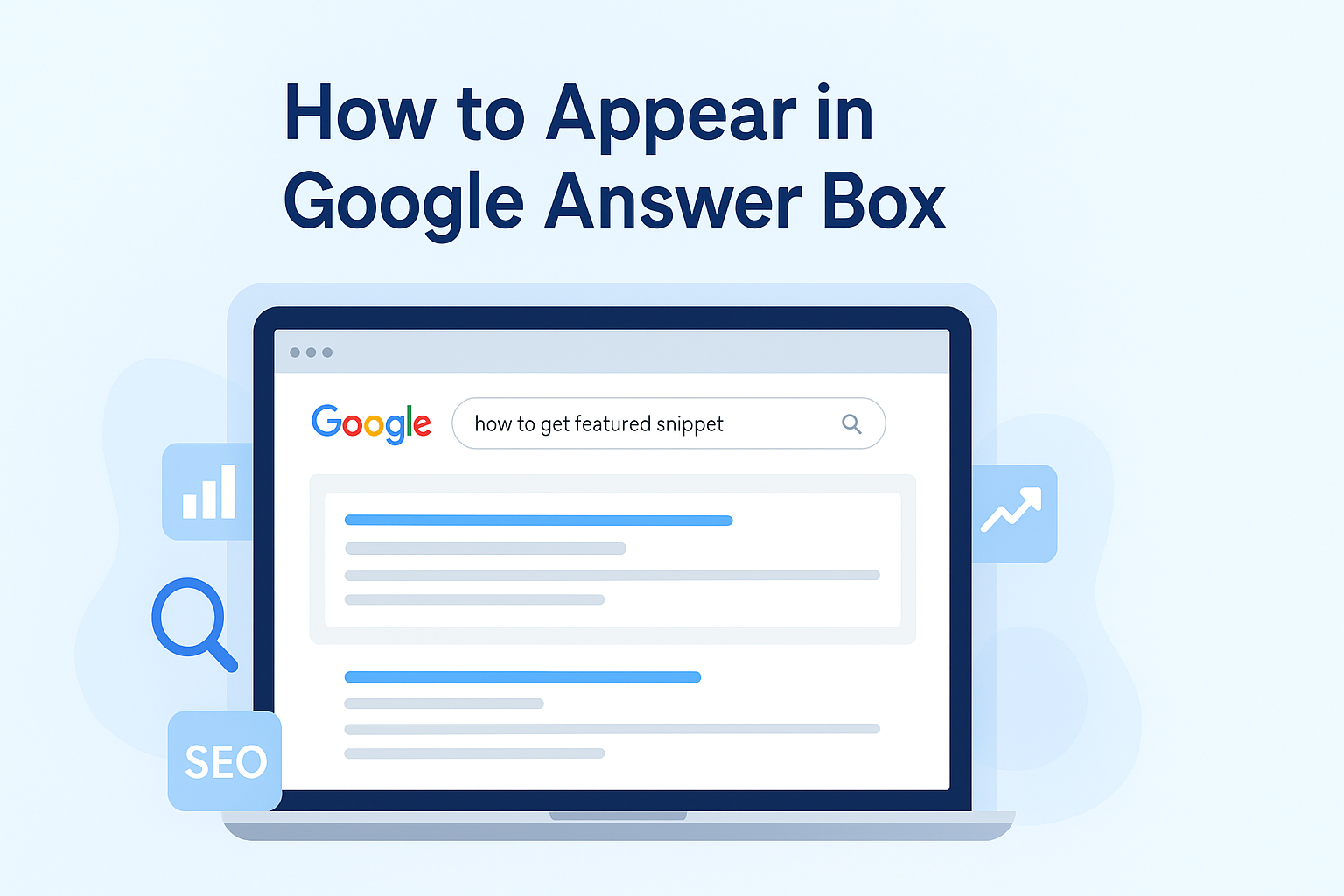How To Appear In Google Answer Box?
In today’s search landscape, appearing in Google’s Answer Box—also known as the Featured Snippet—is one of the most effective ways to gain instant visibility and establish brand authority. Instead of competing for standard rankings, this coveted position puts your answer directly at the top of Google’s search results. For businesses investing in SEO optimization services, achieving a featured snippet can drastically improve organic traffic, click-through rates, and trust signals. At Tekversify, our SEO experts have seen firsthand how structured, intent-driven content helps brands rise above competitors and claim the most valuable real estate on the SERP.
TL;DR
The Google Answer Box—also known as the Featured Snippet—is a high-visibility placement that appears above all organic results. Landing there can skyrocket your organic traffic, click-through rate, and brand credibility. To appear, you need strong on-page SEO, clear formatting, and content that directly answers search intent.Understanding the Google Answer Box
If you’ve ever typed a question on Google and saw the answer displayed instantly at the top, you’ve seen the Answer Box in action. This is Google’s way of providing users with quick, accurate information without needing to click through multiple sites. The Featured Snippet isn’t something you can pay for—it’s earned through content authority, search trust, and structured formatting. Google extracts snippets from top-ranking pages that best address a user’s question. The formats vary (paragraphs, lists, tables, or videos), but the goal remains the same: deliver instant answers. According to Search Engine Journal, about 19% of SERPs now feature snippets, and 60% of those clicks go to the snippet owner. So, if your site isn’t ranking on page one, it’s less likely to be featured, making a smart SEO strategy crucial.Start with Intent-Driven Keyword Research
Many websites target keywords that don’t match user intent. To win the Answer Box, your content must align with informational or question-based searches. Use keyword research tools like Ahrefs, SEMrush, or Google’s People Also Ask feature to identify queries that already trigger featured snippets. Then, create content that answers those questions clearly and concisely. Focus on long-tail keywords and natural phrases like “how to optimize images for SEO” or “what is responsive web design.” Google loves content that mirrors how people speak. The key is not just search volume but search intent—matching your content to what the user truly wants.Content Formatting That Speaks to Google
Even the most valuable article won’t reach the Answer Box without proper structure. Google’s crawlers rely heavily on HTML hierarchy and semantic clarity. Use proper heading tags (H1, H2, H3) to define your content flow. For example, if you’re targeting “how to clean a DSLR camera,” your section should include an H2 heading like “Step-by-Step Guide to Cleaning a DSLR Camera” followed by a short, direct paragraph that answers the question within the first 100 words. Include numbered lists, bullet points, or tables when appropriate—Google favors clear, skimmable structures. As Moz highlights, featured snippets often pull short, structured text blocks that are easy to extract. Don’t forget to implement schema markup for better context, especially FAQ schema and HowTo schema, where relevant.Write for Humans, Optimize for Algorithms
A common mistake is writing solely for Google’s algorithm. However, the best-performing content appeals to both readers and crawlers. Maintain a conversational tone, use examples, and keep paragraphs short. Google typically selects 40–60-word excerpts for snippets, so clarity and brevity win. Balance between keyword density and readability. Don’t stuff terms—use semantic keywords and variations that support the main topic. For example, when writing about “Answer Box optimization,” include phrases like “featured snippet strategy,” “SEO optimization services,” and “on-page SEO techniques.” Each section should deliver standalone value, allowing Google to pull relevant excerpts directly.Build Authority Beyond the Page
Appearing in the Google Answer Box isn’t just about on-page SEO—it also depends on domain authority and off-page trust signals. Earn high-quality backlinks from credible domains using guest posts, digital PR, or resource pages. Tools like Majestic and Ahrefs Backlink Checker can help analyze your site’s authority. Google’s algorithm weighs E-E-A-T factors (Experience, Expertise, Authoritativeness, and Trustworthiness). Strong backlinks, brand mentions, and consistent citations reinforce your site’s credibility. Even if your competitor has similar content, a stronger authority score can secure them the snippet—unless you close that gap with authoritative outreach and high-value content.Leverage the FAQ Section
Embedding a dedicated FAQ section within your articles is an underrated yet powerful technique. Frame each question using a clear header (H3 or H4) and answer it directly below in 40–60 words. This allows you to target multiple question-based keywords in one piece. For instance, a post on SEO fundamentals might include:- What is on-page SEO?
- Why is keyword research important for SEO?
- How can internal linking improve rankings?

